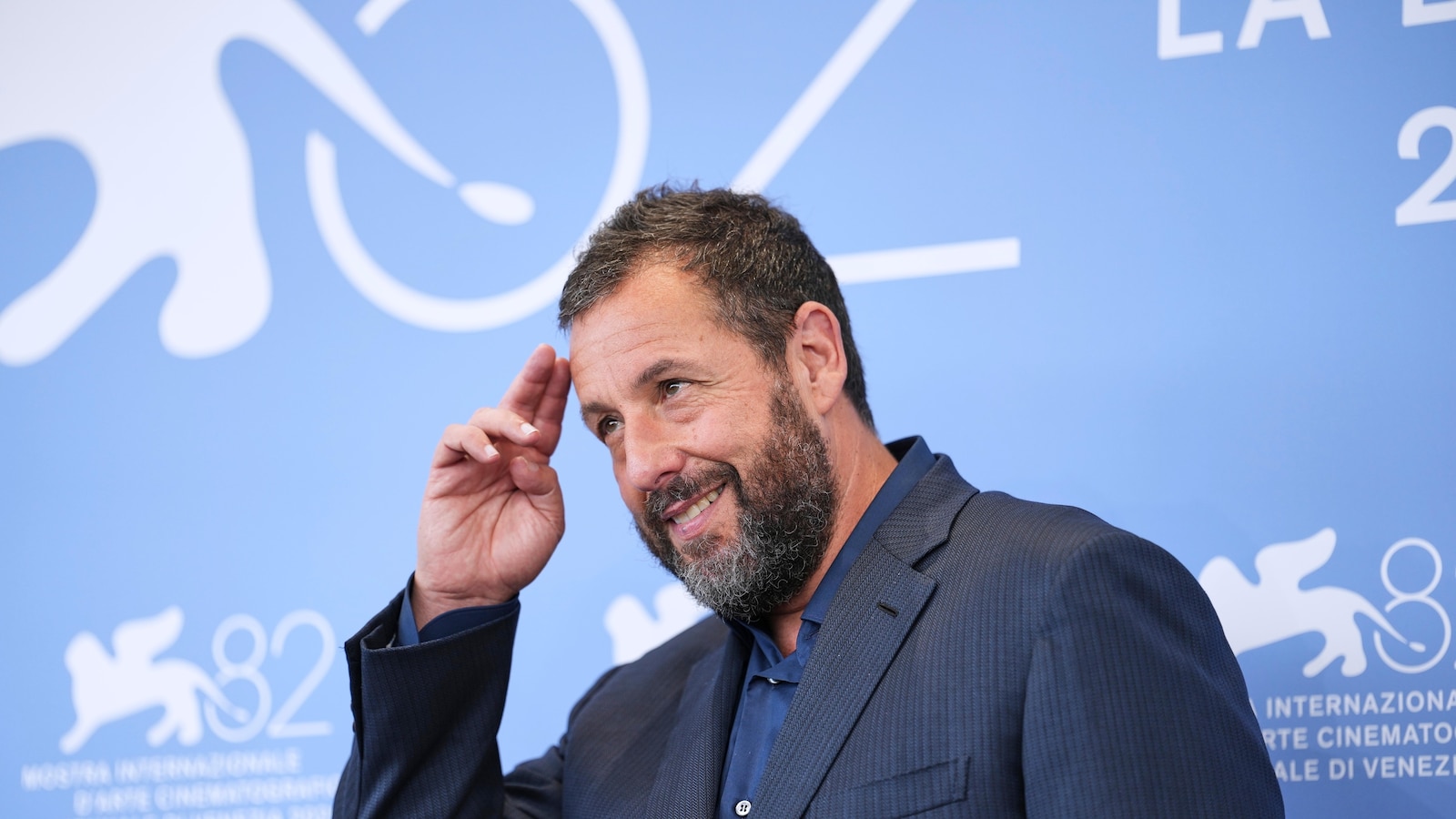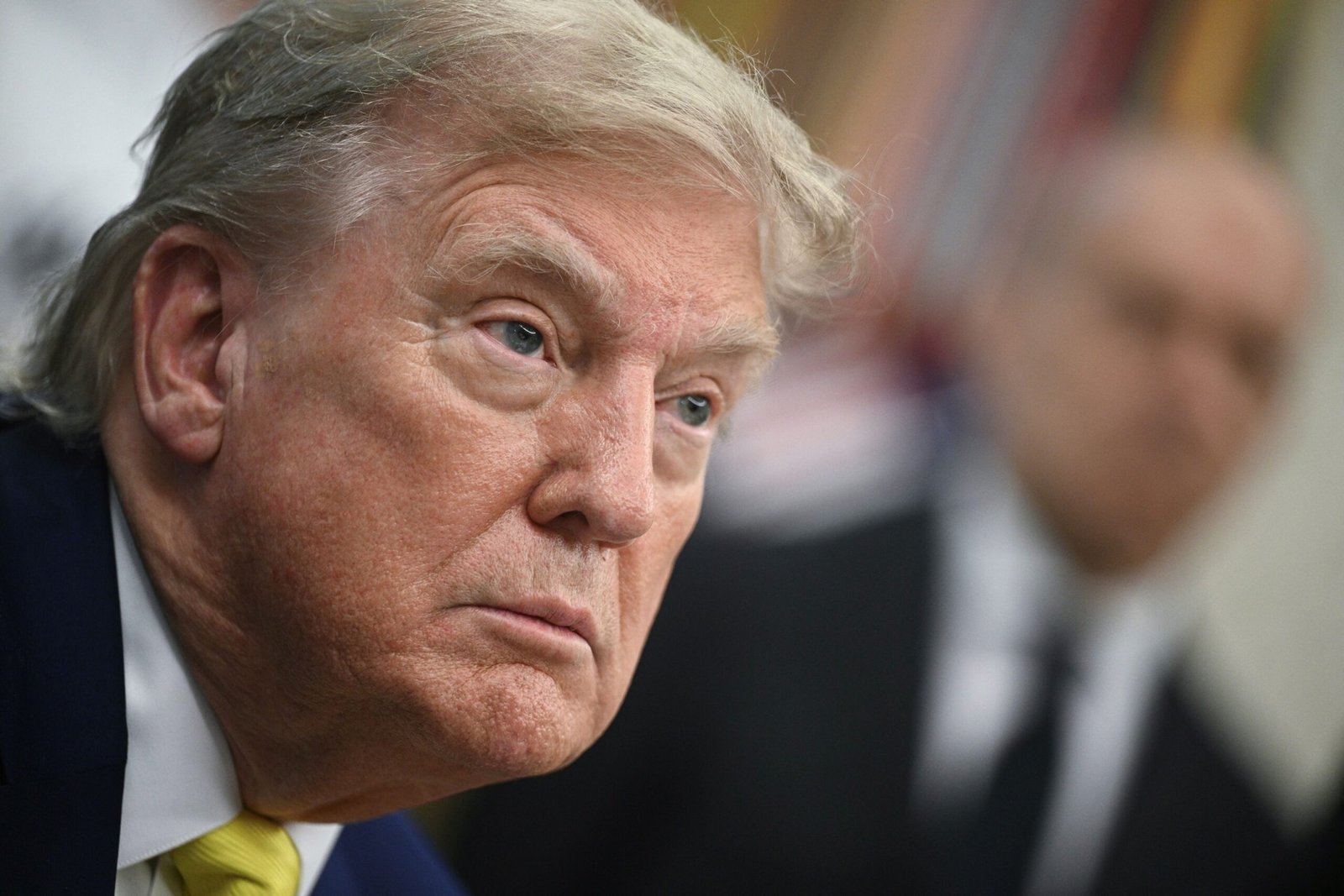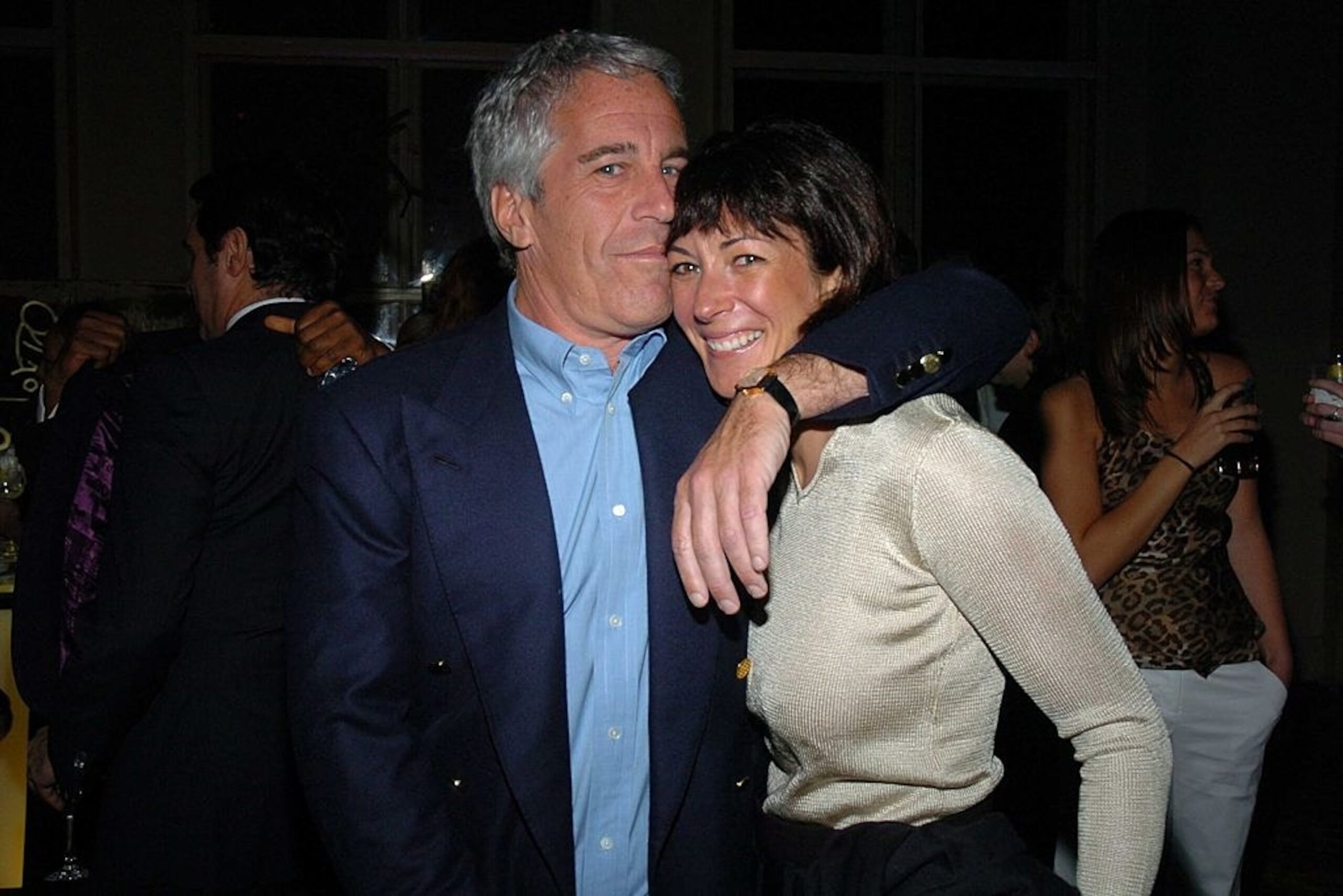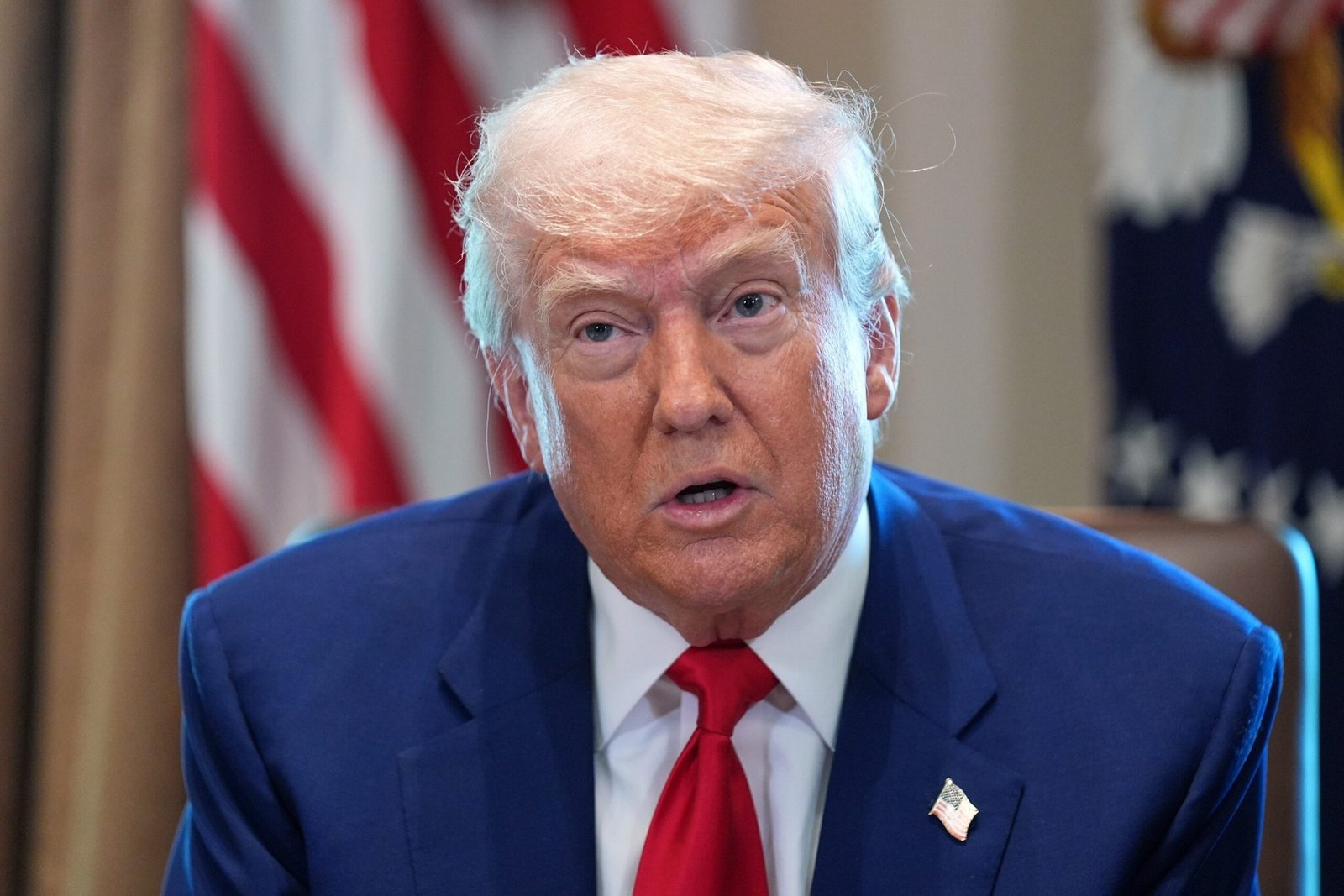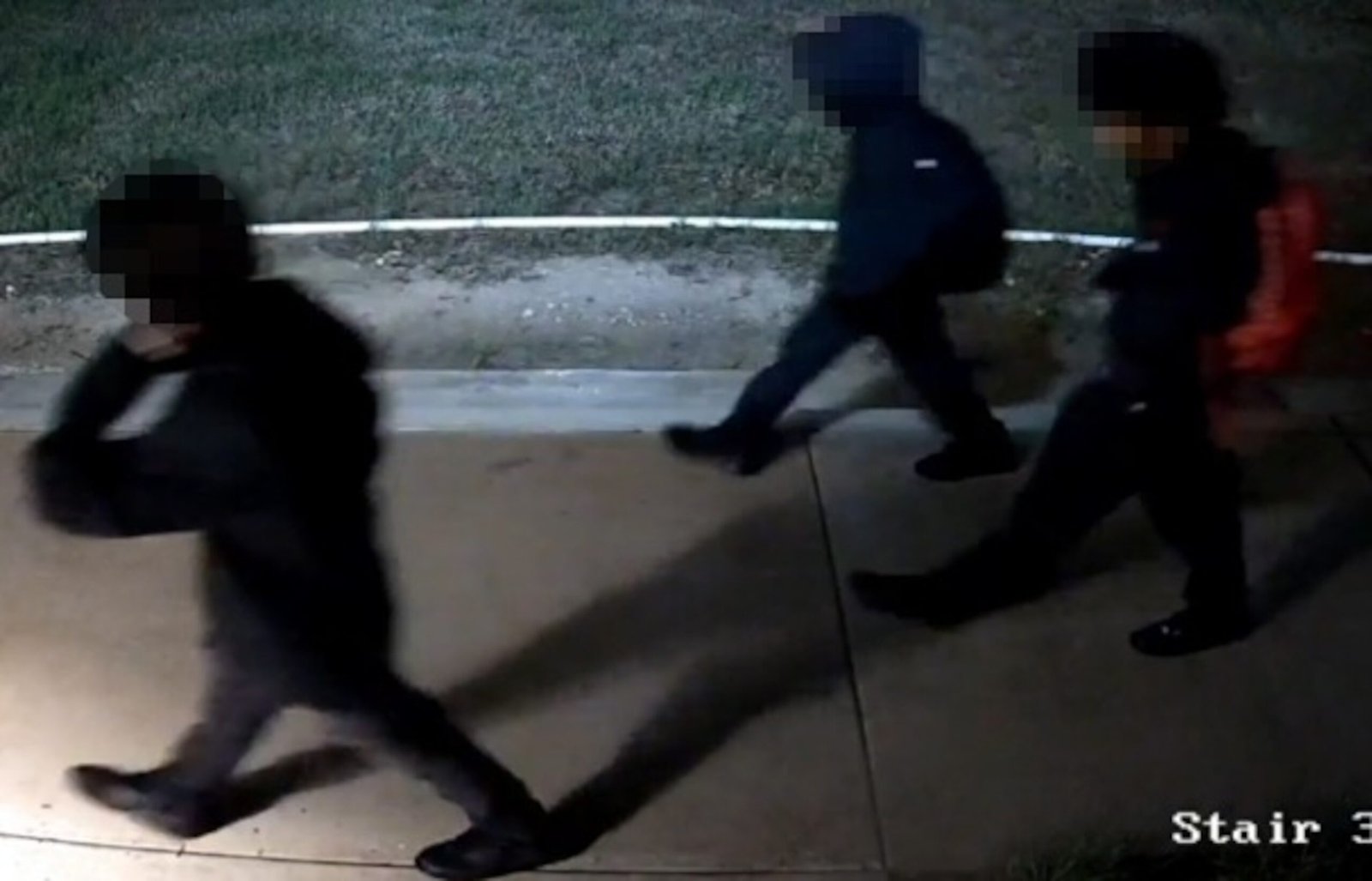Uncertainty about certification affects the possible coverage of diseases related to 9/11
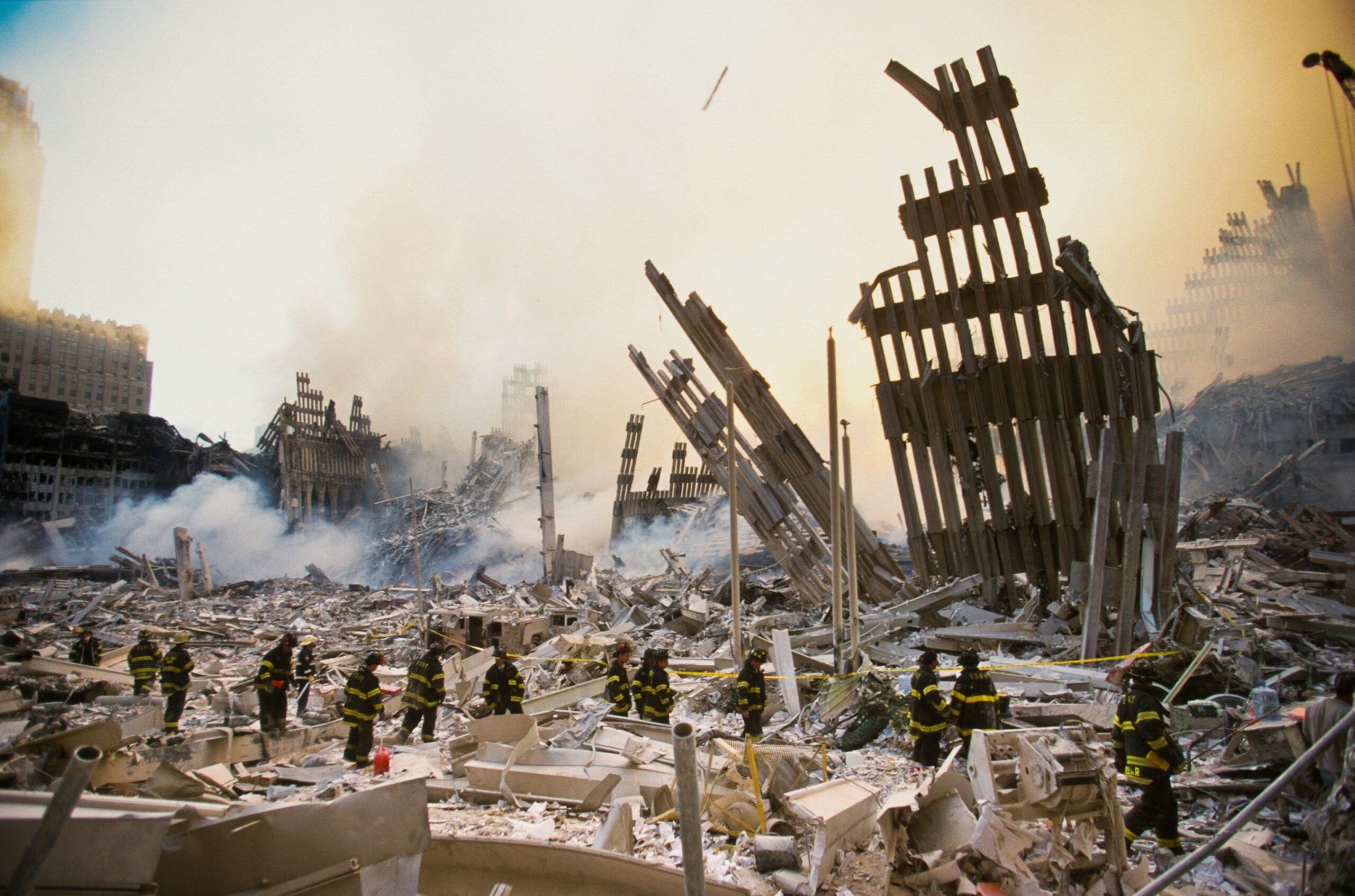
When Routine work retired from the Routine officer of the Nassau Allison Beyerlein County officer showed low platelet levels, cells that help control coagulation and bleeding, three years ago, worried, but never suspected that doctors would find something out of the way.
When her platelet levels fell so low that her doctor sent her to the Hospital’s emergency room, she learned differently. Beyerlein was diagnosed with acquired amegakariocytic thrombocytopenia (AAT), one of the world’s rarest blood disorders. The disease prevents its body from producing platelets, leaving it with a constant risk of dangerous bleeding.
Medical literature has documented only about 100 AAT cases worldwide.
Beyerlein’s case highlights a major problem. She was part of a team of lifeguards who spent weeks cleaning debris after the terrorist attacks of September 11, 2001 to the World Trade Center. However, the World Trade Trade Center (WTC) health program is not reviewing if the new diseases that may be linked to the exhibitions of the zero zone after the September 11 attacks should be added to the list of conditions it covers. That leaves patients with emerging conditions that could be related to this exposure, such as Beyerlein, without financial program or assistance.
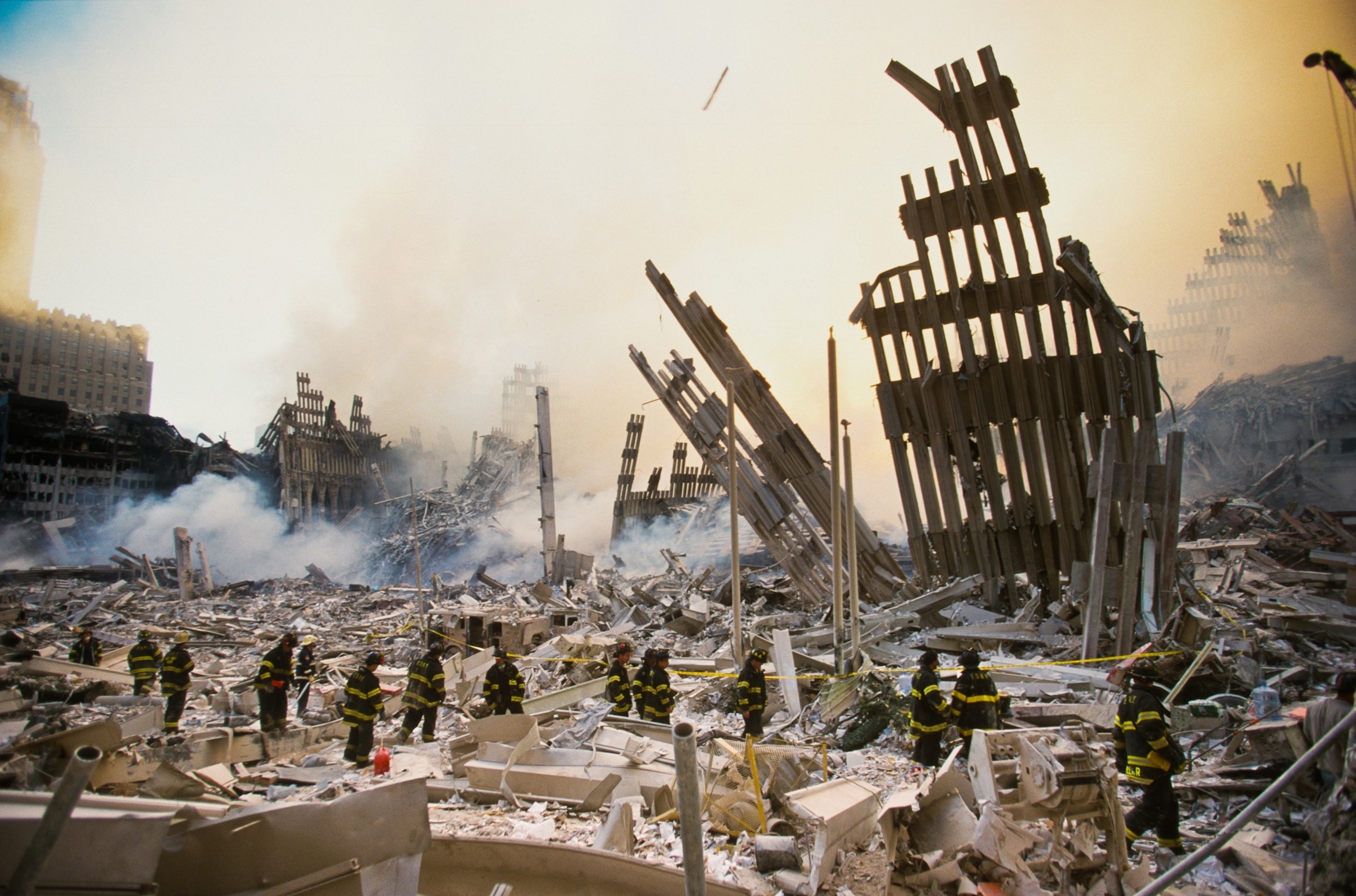
The debris of the World Trade Center Ardenan after the terrorist attacks on September 11, 2001 in New York. A kidnapped plane crashed and destroyed the historical structure. (Photo by Porter Gifford/Corbis through Getty Images)
Porter Gifford/Corbis through Getty Images
“At first, I couldn’t understand how something so weird could happen to me,” Beyerlein told ABC News. “It was not until doctors began to ask about my time in the zero zone that I realized that this could be connected to September 11.”
Beyerlein said he arrived for the first time to the zero zone on September 12, 2001, the day after the attacks, and returned there repeatedly during the months. She described her exposure to the zero zone as “frequent and prolonged.”
He WTC health programcreated under it James Zadroga 9/11 Health and Compensation Law of 2010It provides medical monitoring, treatment and financial compensation for responders and survivors with conditions that it has formally certified as linked to the exhibition of the zero zero of September 11. This certification means that the program determines that scientific evidence connects a disease with that exposure and subsequently makes patients eligible for the coverage and compensation of the treatment.
Cancer, asthma and many mental health conditions are currently certified by the WTC health program. But AAT is not certified, although studies show that AAT can be caused by exhibitions to chemicals such as benzene, a known toxin and carcinogen that were present in dust and debris in zero zone.
This has raised concern among some defenders who say that AAT should be reviewed to determine if the exposure of the zero zero of September 11 can play a role in a person who develops the disease.
“This is exactly the reason we need a operation review process,” said Ben Chevat, executive director of the Watchdog organization without profit 9/11 Health Watch. “If rare diseases like Allison appear in the responders, they should be evaluated without delay.”
While there may be other AAT cases among the community of the first deponsors of September 11, according to defenders, Beyerlein is the only corroborated. Doctors have determined that their disease is not genetic, which makes environmental exposure a probable explanation for it.
Before the current administration, defenders, doctors and patients said they would regularly meet with program officials to help collect data and tests on new diseases that could be added to the list of certified conditions of the WTC health program. These data would be reviewed by experts in the National Institute for Occupational Health and Safety (NIOSH), a federal agency that investigates the health risks related to work.
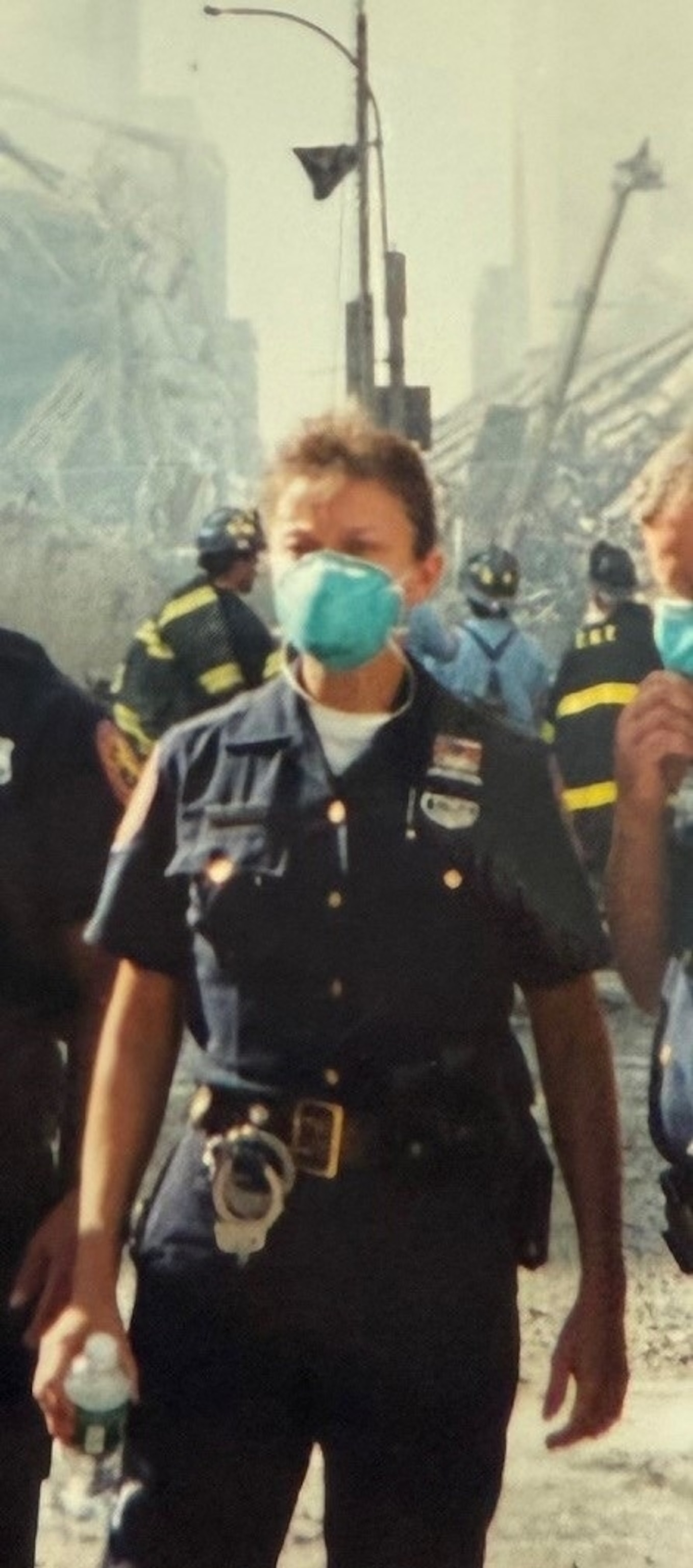
The officer Allison Beyerlein is located in the zero zone on September 12, 2001, the day after the terrorist attacks against the World Trade Center in New York City. (Photo courtesy of Allison Beyerlein)
Allison Beyerlein
Although it is often not possible to determine an exact cause of an individual’s disease, if the data showed a strong potential link to the zero zone exposure of September 11, the disease could be added to the official list of conditions covered under the WTC health program.
Many defenders, doctors and survivors of the exhibition of the zero zone who work within the program claim that the review process is now stuck under a “communications pause” of federal mandate, during which no new conditions for certification cannot be considered, since there can be no presentation or discussion of evidence by NIOSH.
Defenders say that this means that the process to add new conditions to the WTC health program, including AAT, as well as some cardiovascular diseases, autoimmune disorders and cognitive problems, is paralyzed.
When ABC News contacted him a week ago, a spokesman for the Department of Health and Human Services (HHS) said there is no communications pause and that the certification process is moving forward.
“There is no communication break. That was built on February 1 and communicated to all divisions,” said HHS spokesman A ABC News. “Health programs and clinical centers of the World Trade Center continue to provide services to the program members at this time and the program is accepting, reviewing and processing new applications and certification requests.”
Former Congressman Peter King, Republican of Long Island, New York, and one of the first champions of the Zadroga law, told ABC News that despite HHS statements, there is effectively a communications pause during which new diseases cannot be certified under the WTC health program.
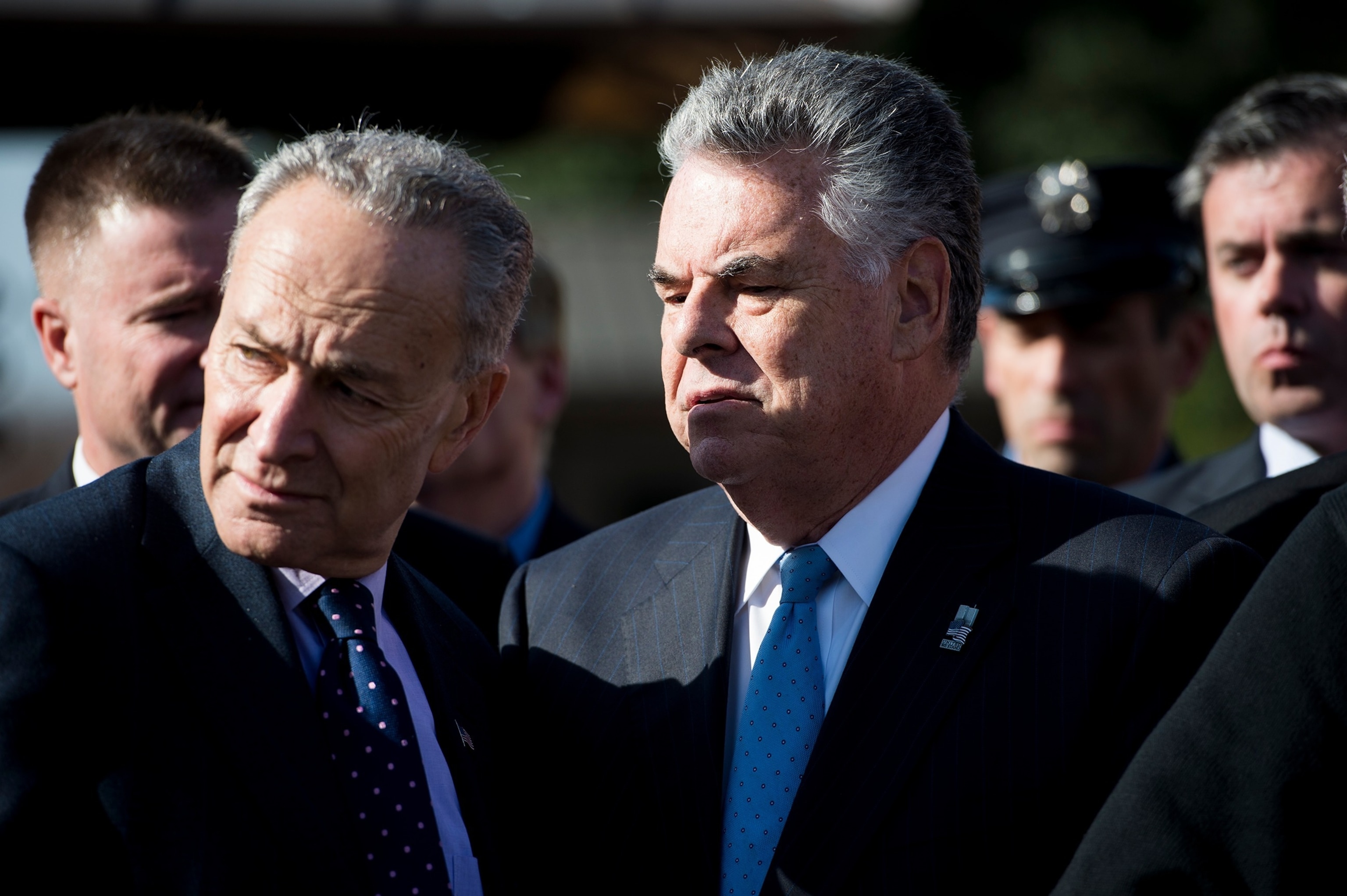
United States – November 17: Senator Chuck Schumer, DN.Y., left, and representative Peter King, RN.y., speaks during the press conference that summons the approval of the approval of James Zadroga 9/11 of health and compensation re -authorization act outside the Capitol on Tuesday, November 17, 2015. The bill provides an extension of the health benefits for all the first Cancer and other diseases of the Capitol of La Vestena Chambers. (Photo of Bill Clark/Cq Roll Call)
Bill Clark/CQ-Roll Call, INC through Getty Immage
“The HHS can call it as you want. In practice, there is no communication at all with the September 11 community. It simply seems to me that it is a stone wall,” King said.
He added that while diseases such as Allison could ultimately be found that they do not occur more frequently in the responders of September 11, each request deserves a quick review. Without it, for example, responders and their doctors cannot know if emerging conditions can adjust to a larger pattern, King said.
“For patients, uncertainty is almost as harmful as the disease itself and the more time remains silent, the more responders they doubt their promise,” King said.
A request for ABC ABC comments sent to HHS regarding the claims of former representative King did not immediately receive an answer.
Ben Chevat of 9/11 Health Watch told ABC News that the WTC health program was designed to grow and adapt as new health problems emerged among the responders of September 11, but today it is stuck in neutral. Without active surveillance and timely decisions, the system runs the risk of failing those that was created to serve, he said.
Chevat and other defenders have pressed for action. In a recent letter that Chevat sent to the HHS Secretary Robert F. Kennedy Jr., he said that the requests have not been a response for months, the surveillance of new conditions has been arrested and the program has not publicly explained how a monitoring of the monitoring conditions potentially linked to the zero zero exhibition of 9/11 is.
“The program must follow the requirements under the statute and make these pending determinations,” Chevat wrote. He told ABC News that he has not yet received an answer to his letter.
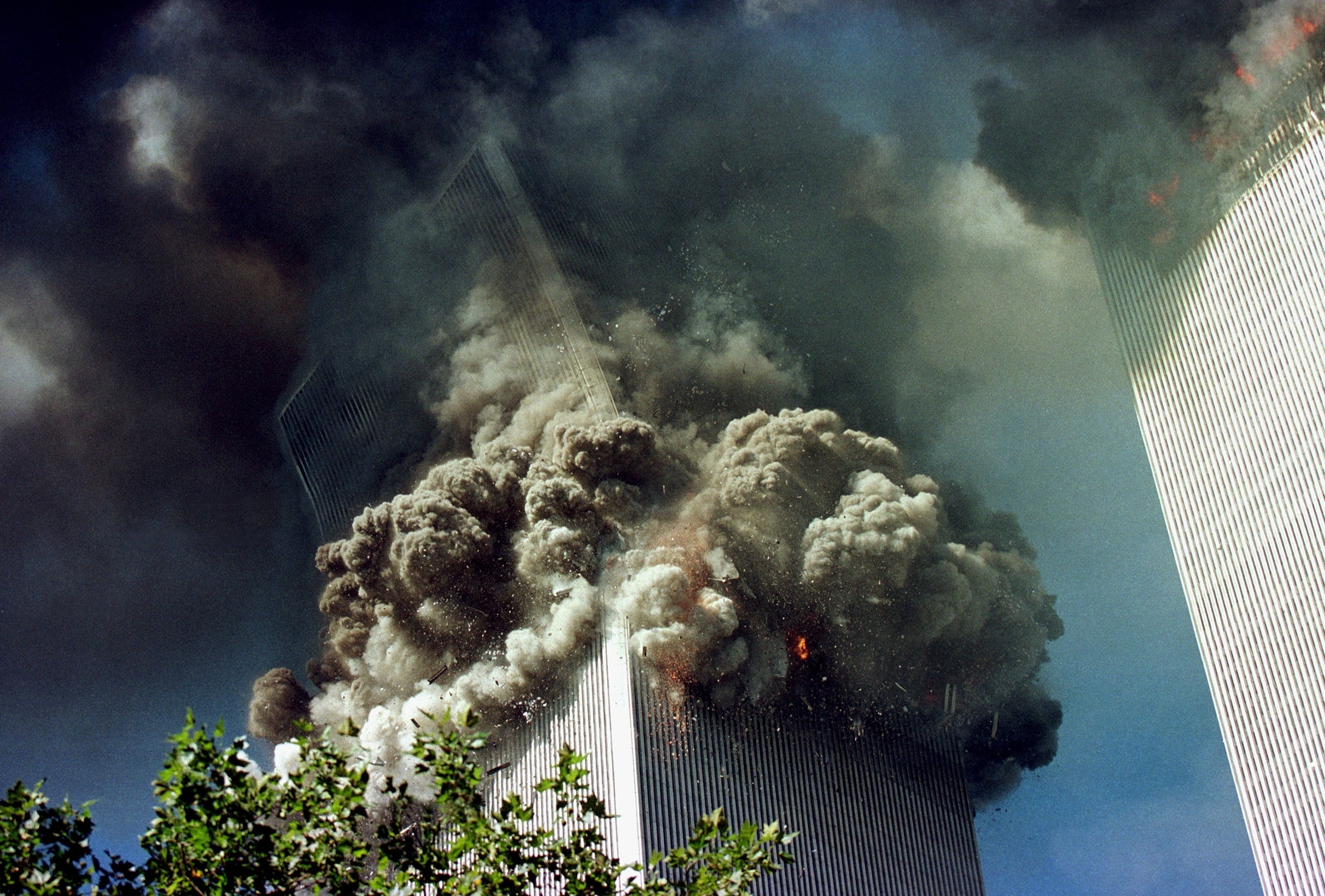
The southern tower of the World Trade Center Collapse on September 11, 2001 in New York City.
Thomas Nilsson/Getty Images
The last communication that Beyerlein said he received from the WTC health program was in January this year and did not offer coverage or compensation for his illness, but said they would contact it if “a possible condition related to the WTC was identified.”
Without certification, Beyerlein cannot obtain the assistance of the WTC health program paying your medical invoices or receiving other compensation for the toll that your disease has taken in your life, if it has been shown that it was caused by its exposure to the zero zone.
“I sacrificed as one of the first to respond, but now I face a continuous struggle just for my illness to be recognized,” Beyerlein told ABC News. “This disease has changed everything about my daily life. I live every day knowing that I could bleed without prior notice and, nevertheless, the government cannot decide if I deserve attention. It is not fair.”
“I did my work in the zero zone. Now they need to do their own,” said Beyerlein


